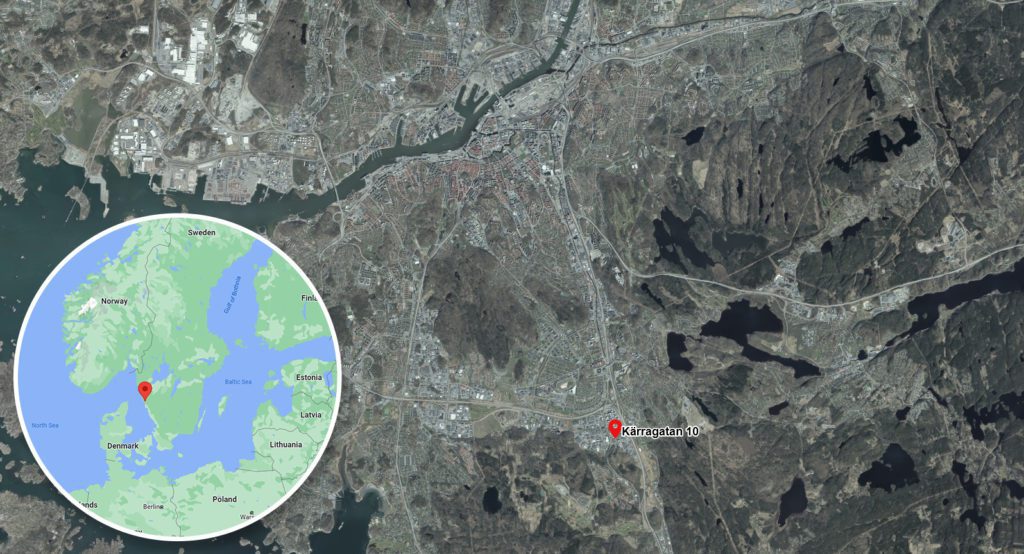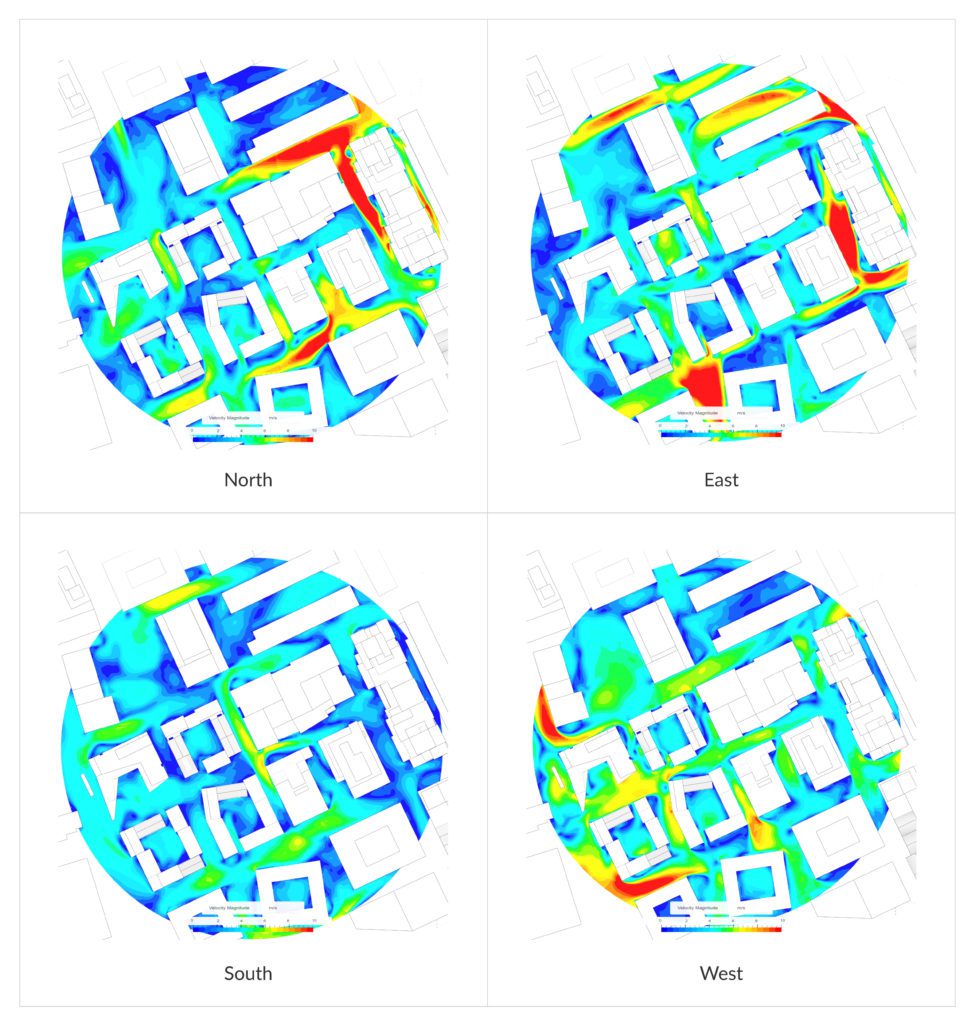
Liljewall Arkitekter, founded in 1980, is a creative, innovative, sustainable architectural office based in Sweden. They are a firm of 270 architects and designers in Gothenburg, Stockholm and Malmö, recognized as leaders in sustainable buildings and sites. Ecological, social and economic sustainability perspectives are the cornerstones of the work at Liljewall, taking an emphasis on natural resources, energy and occupant well-being into account throughout the design process. The firm has an ambitious goal for all its projects to be climate neutral by 2030.
Liljewall works with a wide range of digital tools to implement state-of-the-art thinking and methodologies to accomplish net-zero carbon buildings. By connecting experienced BIM experts, software developers, architects, visualizers, and environmental performance specialists, Liljewall will be at the forefront of developing skills, software tools, and projects that meet the needs of future generations. Implementing SimScale into the design process at Liljewall has offered their architects the latest in microclimate simulation technology.
Alexander Gösta, architect and head of data-informed and computational design at Liljewall’s Stockholm office, is part of a team driving digital development and data, specifically for early-stage design performance and analysis that can provide feedback quickly to the critical design decisions as and when needed. They specialize in supporting analytics and digital design tools to the broader firm and developing their tools as well as using tools such as Ladybug and Grasshopper. The team consists of architects and construction engineers with a multi-disciplinary skill-set, including coding and software development: They make these design tools and the necessary support available and accessible to the broader company, primarily for early-stage design, so any architect can use simulation and analysis without overly relying on experts.

Typical analysis types and tools they have used include daylight modeling, parametric modeling of geometry, and some generative design on blocks/massing using Ladybug, Grasshopper, Rhino and Radiance, and some clever bespoke scripts developed in-house to streamline their workflows. Rhino and ArchiCAD are the mainstay CAD tools for early stage and detailed design stages, and Liljewall is also an early adopter and expert in building information modeling (BIM). When Liljewall needed wind studies and microclimate simulation for some of their upcoming projects, they decided to use SimScale after trying several available tools. Their experience working with Rhino and ArchiCAD has made it a natural fit as SimScale imports and integrates with both.
SimScale works seamlessly with native Rhino files and can quickly import into SimScale without any CAD cleanup necessary. Likewise, exporting an STL file from ArchiCAD and other tools such as Revit is the best approach to preparing complex geometry for simulation, an oft-quoted bottleneck when working with large models. The Lattice Boltzmann Method (LBM) solver Pacefish®, integrated into SimScale, offers fully transient external flow simulations. One of the key advantages of this approach is its robustness in importing complex CAD models. Because of the novel physics, the geometry no longer needs to be water-tight, and what used to be classified as imperfect geometry for simulation purposes is now easily handled in SimScale. Architects often quote this feature as the most considerable advantage of using SimScale over other tools, along with automated meshing and easy post-processing results. Liljewall also imports terrain geometry using CAD mapper and OpenStreetMap, again, easily imported into SimScale for wind studies.
At Liljewall, SimScale is used for early-stage design pedestrian wind comfort studies on ground level for new housing development and entire districts. The wind simulation studies are performed for multiple wind directions using an integrated climate data set with weather records available for thousands of locations worldwide and also the National Meteorological Institute of Sweden (SMHI). Wind comfort and safety results can also be visualized on balconies and roofs, giving more accurate design data. The key reason Liljewall wanted tools like SimScale was to address critical design questions for new district (10-20 blocks) developments, including:
The architects at Liljewall can now answer these questions using the simple and intuitive workflow of importing a CAD model and performing wind simulation studies over a typical weather year. Using results in 2D and 3D, both static and transient (including time-dependent effects), an iterative design insight-based design process is applied, and any undesirable high winds are mitigated. Access to the quantitative data and visualizations allows the architects to discuss mitigation measures with their clients or propose alterations to the scheme layout and orientation, for example. Although Sweden has no mandatory wind guidelines, there is a growing awareness about pedestrian wind comfort and how trees, wind canopies, and other streetscape objects can be used to positively influence the local microclimate to make it more comfortable for occupants.
The GoCo Health Innovation City development in Gothenburg, Sweden, is a district-level master plan for housing and supporting amenities. Parts of the scheme are under construction, whilst other parts are being finalized with design and analysis input from Liljewall, who has undertaken an analysis of wind comfort using SimScale. The images below show wind comfort analysis on the CAD model using the pedestrian wind comfort tool in SimScale. Comfort bands according to specific wind criteria are generated automatically. Transient wind velocities and wind streamlines are also shown in the plan and section view and are used to identify high-velocity aerodynamic effects such as channeling.

Liljewall is using SimScale to improve the quality of life in urban areas, public areas such as parks, and residential schemes such as the GoCo Health Innovation City project in Sweden.

Alexander Gösta
Head of Data-Informed and Computational Design
at Liljewall


Liljewall plans to roll out SimScale to a wider user group after internal trials and training programs have been completed. Other features they are intending to leverage further include:
The advantages of performing in-house simulation studies help to provide a design service in early stage design at Liljewall, including adding a new service offering to their clients. Compared to how they were commissioning these studies before, there is a much faster turnaround time for results than external consultants. One of the most significant advantages is the ability to perform quick analysis for competitions and bids that need to be turned around in short timeframes. It has also made collaboration within teams much easier using the built-in collaboration features in SimScale. “Liljewall is using SimScale to improve the quality of life in urban areas, public areas such as parks, and residential schemes such as the GoCo Health Innovation City project in Sweden.” Alexander Gösta, Liljewall.
Sign up for SimScale
and start simulating now